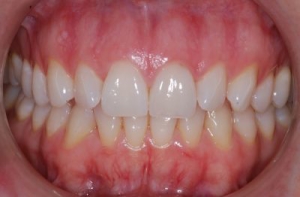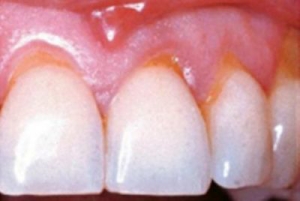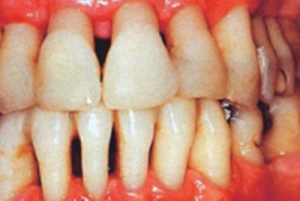Call us today to schedule an appointment: 541-388-1434
Dental Cleaning
Preventative care is the foundation of dentistry.
What is Prophylaxis?
Prophylaxis refers to the cleaning of teeth as a preventative measure against periodontal (gum) disease and tooth decay. This treatment can include plaque detection, the removal of plaque and tartar in the supragingival (upper) and subgingival (lower) levels of the gum line, the application of cavity-preventing agents, checking for signs of food impaction and the checking of restorations and prostheses.
In prophylaxis the procedures of dental scaling and dental polishing are used. Dental scaling refers to the removal of plaque and calculus from the surface of tooth within periodontal pockets or the surface coronal to the gingival margin. Dental polishing refers to the process getting a smooth and glossy surface finish on the teeth.

Healthy Mouth
Family Dentistry
Implant Dentistry
Cosmetic Dentistry
+ Bonding
+ Teeth Whitening
+ Veneers and Crowns
Pediatric Dentistry
Sedation Dentistry
Common Procedures
+ Composite Fillings
+ Same Day Crowns & Bridges
+ Dental Cleaning
+ Dentures & Partial Dentures
+ Oral Surgery and Extractions
+ Root Canals
+ TMJ/TMD
Periodontal Scaling and Root Planing
If your dentist determines that you have some bone loss or that the gums have receded from the teeth, the standard treatment is an intensive deep-cleaning, non-surgical method called scaling and root planing (SRP). Scaling removes the plaque and tartar from above and below the gumline. Root planing smoothes rough spots on the tooth root where germs collect and helps remove bacteria that can contribute to the disease. This smooth, clean surface helps allow the gums to reattach to the teeth.
Periodontal procedures such as SRP (Scaling and Root Planing) are done in the office. Often a local anesthetic is given to numb the area before treatment. If necessary, medication is given to help you relax.
After scaling and root planing procedures, you will require a periodontal maintenance every 3-4 months to maintain your condition.

Recession

Bone loss and recession
Periodontal Maintenance
During visits with a hygienist for periodontal maintenance, scaling, root planing and polishing are performed. The hygienist will evaluate the success of at-home maintenance and make any necessary suggestions for improvement. Appointment intervals for periodontal maintenance are usually every three – four months. It is also vital to maintain oral health by having a dental checkup every six months to remove any existing decay, replace worn or loose fillings, and to replace extracted teeth with removable appliances, fixed bridgework or dental implants.
Things to keep in mind…
While plaque is the primary cause of periodontal disease, the American Academy of Periodontology (AAP) says that other factors are thought to increase the risk, severity and speed of gum disease development. These can include:
- Tobacco use — one of the most significant risk factors associated with the development of periodontitis. People who smoke are seven times more likely to get periodontitis than nonsmokers, and smoking can lower the chances of success of treatment.
- Hormonal changes — may make gums more sensitive and make it easier for gingivitis to develop.
- Stress — may make it difficult for the body’s immune system to fight off infection.
- Medications — can affect oral health because they lessen the flow of saliva, which has a protective effect on teeth and gums.
- Poor nutrition — may make it difficult for the immune system to fight off infection, especially if the diet is low in important nutrients. Additionally, the bacteria that cause periodontal disease thrive in acidic environments. Eating sugars and other foods that increase the acidity in the mouth increases bacterial counts.
- Illnesses — may affect the condition of your gums. This includes diseases such as cancer or AIDS that interfere with the immune system, as well as diabetes and heart disease.
- Clenching and grinding teeth — may put excess force on the supporting tissues of the teeth and could speed up the rate at which these tissues are destroyed.
Did you know…
Americans are less and less likely to visit the dentist as they age? Data from the Centers for Disease Control reports that only 64.3% percent of Americans over age 65 visited the dentist in 2016. That compares to about 64.4 percent adults under age 65 and about 84.6 percent of children ages 2 to 17. Nonetheless, it is important to visit a Bend Oregon dentist for cleanings and exams regardless of how long has passed since your most recent dental appointment.
East Bend Dental
Call Us
541-388-1434
Fax
541-388-1293
Office Address
2250 NE Professional Ct.
Bend, Oregon 97701
GET DIRECTIONS
Hours
Appointments Available
Mon., Tues., Thurs.
7:30am - 4:00pm
Wed.
8:00am - 5:00pm
REQUEST AN APPOINTMENT
special assistance
We understand the special needs of some patients. Should you need assistance with our website or any information provided, visit our Accessibility Page. You may call us directly at 541-388-1434 or email us using the contact form above and we will gladly provide necessary assistance.

